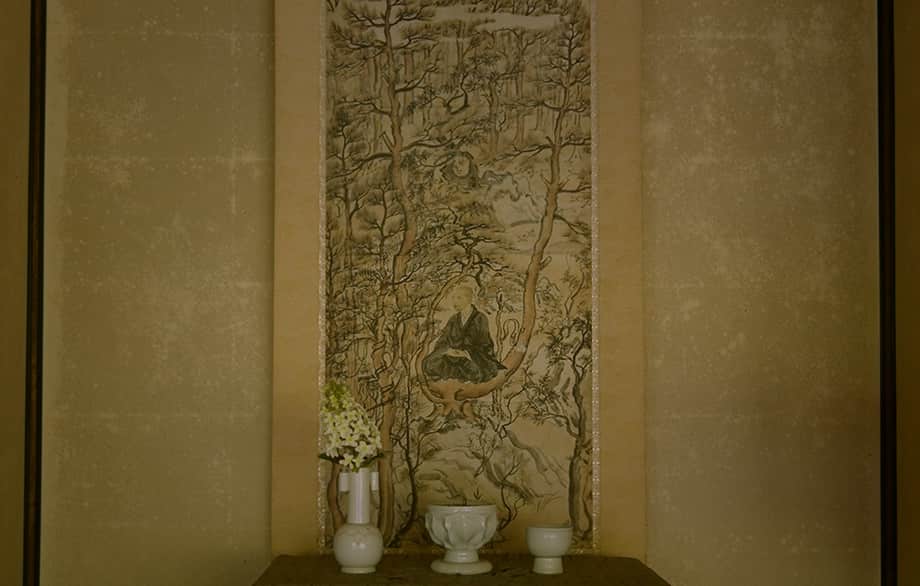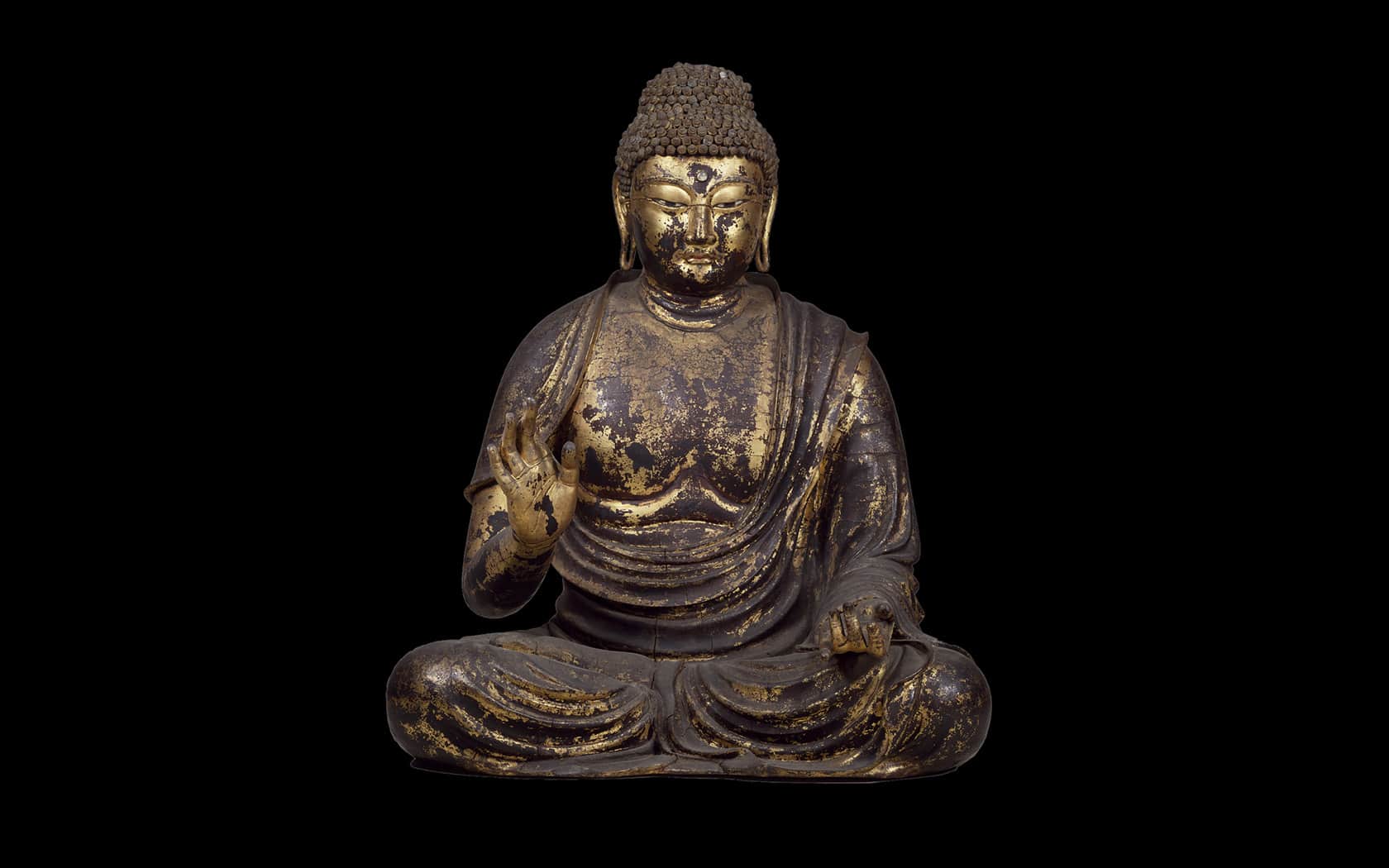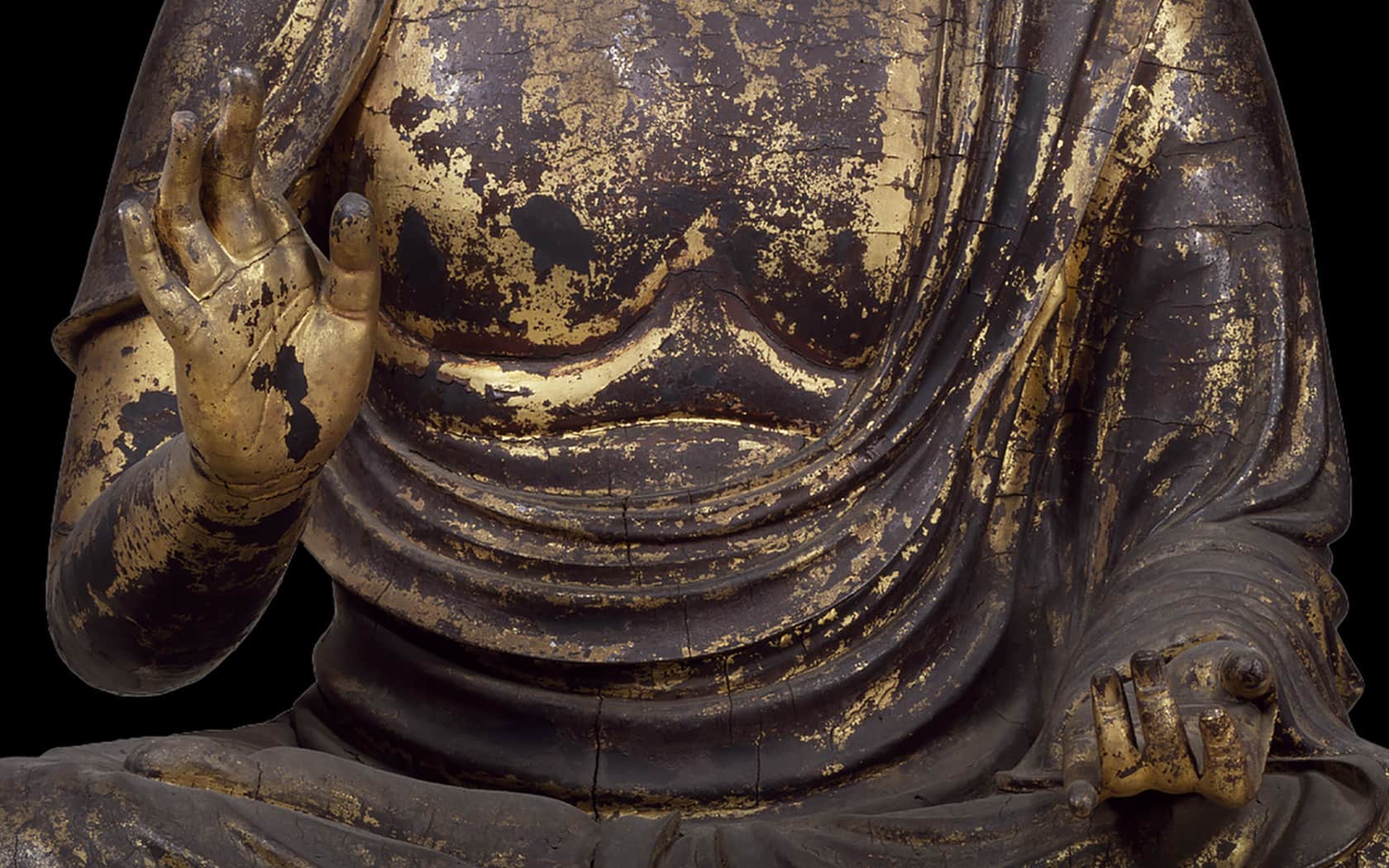The Yakushi Nyorai seated statue is considered to be from the late Nara period, exhibiting a robust body and a strict expression.
A mokushin kanshitsu technique was applied to create the form, where a mix of wood powder and lacquer was molded over the core of the statue carved from wood.
Nara period
Refers to the period between 710 and 784 when the capital was moved to Heijo-kyo, present day Nara. Lasting a little over 70 years the period saw the reign of seven emperors: Genmei, Gensho, Shomu, Kenko, Junnin, Shotoku, and Konin. In art history, the Nara period is sometimes referred to as the Tenpyo period, and is marked by the splendour of the Buddhist statuary and architecture produced.
Yakushi Nyorai
The master of the Eastern Lapis Lazuli Pure Land, who made twelve great vows, including to relieve beings of their illnesses and suffering, eliminate physical defects, and help them attain enlightenment.
wood powder and lacquer mix
A mixture of lacquer glue and wood powder. It serves to bond cracks and joints, and is utilized in the creation and repair of Buddhist statues.
mokushin kanshitsu
The technique involves carving the basic shape of the statue from wood, overlaying it with hemp cloth, and then applying layers of fragranced or wood powder lacquer to complete it. The inner wooden core remains intact within the statue.
It originally belonged to Tamba Yasuyori (912–995), a physician, as his private Buddha statue at Kinrinji Temple on Mt. Kan'no in Tamba. It is thought to have been transferred to Kosanji Temple due to Koshin, a leading disciple of Myoe Shonin, entering Mt. Kan'no and forming a connection with the temple.
private Buddha statue
A Buddhist statue to be placed nearby a person or worn for personal reverence.

Myoe
Born in 1173 in present-day Yuasa, Aridagawa Town, Wakayama Prefecture, Myoe was a Buddhist monk known for rejuvenating the Huayan sect of Buddhism. After becoming a priest under Mongaku at Jingoji Temple, he studied Kegon Buddhism at Todaiji Temple and received the secret teachings from Konen at Kajuji Temple. He was awarded the land of Togano by Retired Emperor Gotoba in 1206 and built Kosanji Temple as the center of the Huayan sect. He died in 1232.
Koshin
Born in 1193, Koshin was a monk from the Kamakura period and a leading disciple of Myoe Shonin. He died in 1264.
Once it was the center of a triad of statues, its former flanking attendants on both sides, the Nikko Bosatsu statue, designated an Important Cultural Property, is now housed in the Tokyo National Museum, while the Gekko Bosatsu statue is in the Tokyo University of the Arts.
triad of statues
In the case of a set of revered statues enshrined in a temple hall, the central principal statue and the two flanking attendants are collectively referred to as a triad of statues. Typically, the principal statue is called chuzon, while the two attendants are known as wakiji.
Nikko Bosatsu
An attendant figure of Yakushi Nyorai. Positioned to the left of the Nyorai, facing the Gakko Bosatsu on the right. This bodhisattva is believed to possess the virtue of illuminating the darkness of samsara, akin to the way sunlight dispels all shadows, thereby offering salvation to all beings.
Gakko Bosatsu
An attendant figure of Yakushi Nyorai. Positioned to the right of the Nyorai, facing the Nikko Bosatsu on the left. This bodhisattva symbolizes the light of the moon.




